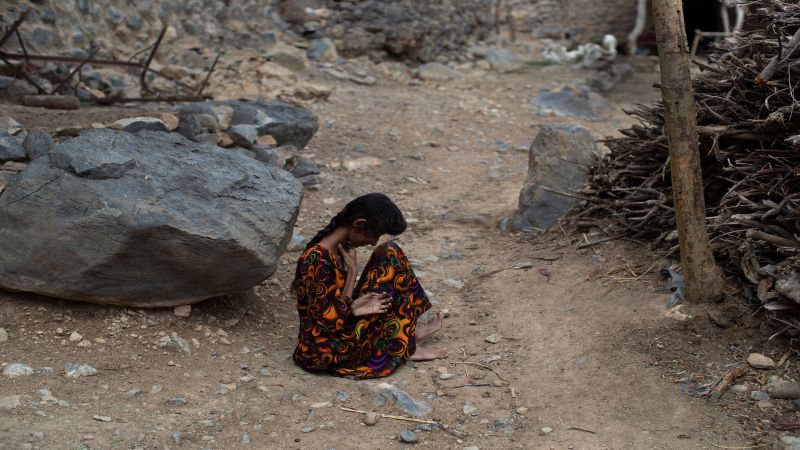
Local Editor
At a restaurant in the Yemeni capital, Sana, a waiter brought bowls of slow-cooked lamb served with mounds of rice. For dessert there was kunafa, the classic Arab dish of golden brown pastry filled with cheese.
An hour later I was back at work, in a hushed hospital ward filled with malnourished children with skeletal faces, hanging between life and death for want of money and a good meal.
If that juxtaposition strikes you as jarring, even distasteful, it felt that way to me too.
Crisis zones are often places of stark contrast, but in Yemen the gulf is particularly uncomfortable. The problem isn’t a lack of food; it’s that few people can afford to buy what food is available.
Years of blockades, bombs and soaring inflation have crushed the economy. A crushed state means there is no safety net.
As a result, beggars congregate outside supermarkets filled with goods; markets are filled with produce in towns where the hungry eat boiled leaves; and restaurants selling rich food are a few hundred yards from hunger wards filled with desperation, pain and death.
For a reporter, that brings a dilemma. Journalists travel with bundles of hard currency, usually dollars, to pay for hotels, transport and translation. A small fraction of that cash might go a long way for a starving family. Should I pause, put down my notebook and offer to help?
It’s a question some readers asked after we published a recent article on Yemen’s looming famine.
Many were touched by a powerful photograph by Tyler Hicks of Amal Hussain, an emaciated 7-year-old girl whose haunting stare brought the war’s human cost into shocking focus.
And many were devastated to learn that, soon after we left, Amal’s mother brought her back to the shabby refugee camp they call home, where she died a few days later.
Some, in their anguish, turned the focus back on us.
Why we didn’t we do something to save Amal’s life, they wanted to know. Did we just take the photo, conduct the interview and move on? Couldn’t we have somehow ensured that her family would get help?
“You can take the picture AND provide assistance,” one woman said on Twitter. “One doesn’t rule out the other.”
The questions resonated. Reporters are trained to bear witness; aid workers and doctors have the job of helping people.
Donating money, or other forms of assistance, can be fraught with ethical, moral and practical complications. Is it fair to single out one person or family for help? What if they embellish their story for the next foreigner who comes along, thinking they could get more money?
Plus, we have a job to do.
Doctors show us around, and sometimes we end up acting like them — examining stick-like limbs and flaccid skin with clinical detachment; tabulating figures about weight and age; listening as families recount their tragedies with amazing calm. The prospect of death is discussed. We nod sagely, make a note, move on.
But while we may try to mimic a stone, we are not stones, and every day in Yemen someone told me something that made a lump rise in my throat.
Usually it was a mundane detail, like the lack of a few dollars to take a dying child to the hospital. Yemen, you realize, is a country where people are dying for lack of a taxi fare.
Source: NYT, Edited by Website Team